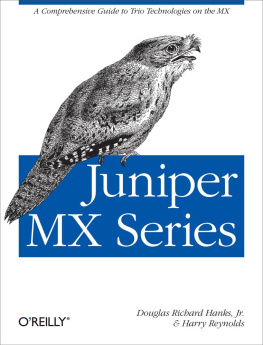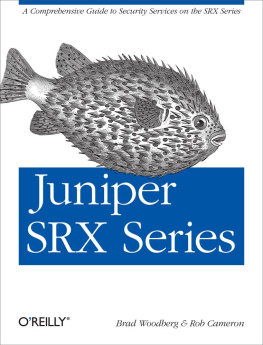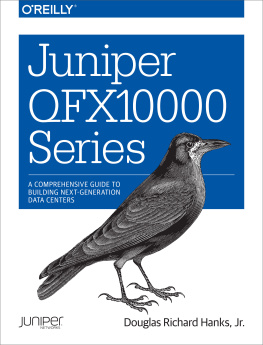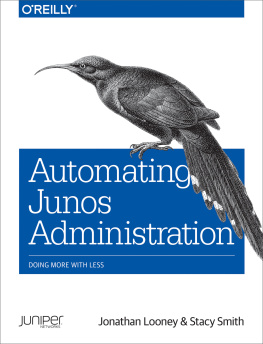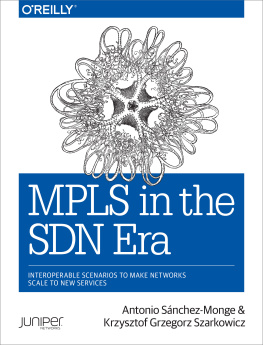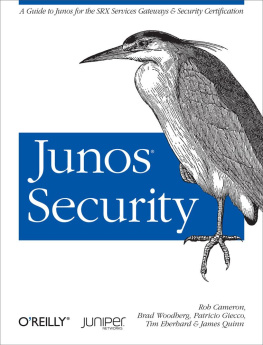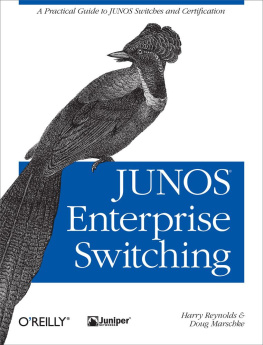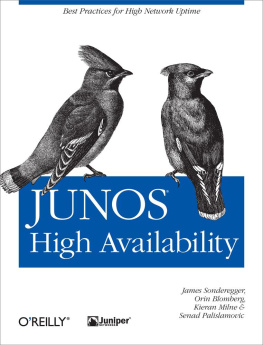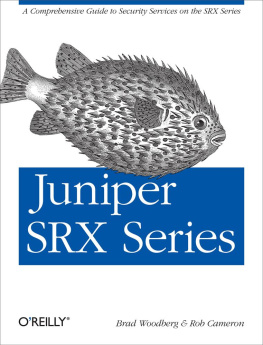Douglas Richard Hanks Jr. - Juniper MX Series
Here you can read online Douglas Richard Hanks Jr. - Juniper MX Series full text of the book (entire story) in english for free. Download pdf and epub, get meaning, cover and reviews about this ebook. year: 2012, publisher: OReilly Media, genre: Home and family. Description of the work, (preface) as well as reviews are available. Best literature library LitArk.com created for fans of good reading and offers a wide selection of genres:
Romance novel
Science fiction
Adventure
Detective
Science
History
Home and family
Prose
Art
Politics
Computer
Non-fiction
Religion
Business
Children
Humor
Choose a favorite category and find really read worthwhile books. Enjoy immersion in the world of imagination, feel the emotions of the characters or learn something new for yourself, make an fascinating discovery.
- Book:Juniper MX Series
- Author:
- Publisher:OReilly Media
- Genre:
- Year:2012
- Rating:3 / 5
- Favourites:Add to favourites
- Your mark:
Juniper MX Series: summary, description and annotation
We offer to read an annotation, description, summary or preface (depends on what the author of the book "Juniper MX Series" wrote himself). If you haven't found the necessary information about the book — write in the comments, we will try to find it.
Discover why routers in the Juniper MX Series, with their advanced feature sets and record breaking scale, are so popular among enterprises and network service providers. This authoritative book shows you step-by-step how to implement high-density, high-speed Layer 2 and Layer 3 Ethernet services, using Router Engine DDoS Protection, Multi-chassis LAG, Inline NAT, IPFIX/J-Flow, and many other Juniper MX features.
Written by Juniper Network engineers, each chapter covers a specific Juniper MX vertical and includes review questions to help you test what you learn.
- Delve into the Juniper MX architecture, including the next generation Junos Trio chipset
- Explore Juniper MXs bridging, VLAN mapping, and support for thousands of virtual switches
- Add an extra layer of security by combining Junos DDoS protection with firewall filters
- Create a firewall filter framework that only applies filters specific to your network
- Discover the advantages of hierarchical scheduling
- Combine Juniper MX routers, using a virtual chassis or Multi-chassis LAG
- Install network services such as Network Address Translation (NAT) inside the Trio chipset
- Examine Junos high availability features and protocols on Juniper MX
For the no-nonsense engineer who likes to get down to it, The Juniper MX Series targets both service providers and enterprises with an illustrative style supported by diagrams, tables, code blocks, and CLI output. Readers will discover features they didnt know about before and cant resist putting them into production.
Ethan Banks, CCIE #20655, Packet Pushers Podcast Host
Douglas Richard Hanks Jr.: author's other books
Who wrote Juniper MX Series? Find out the surname, the name of the author of the book and a list of all author's works by series.

